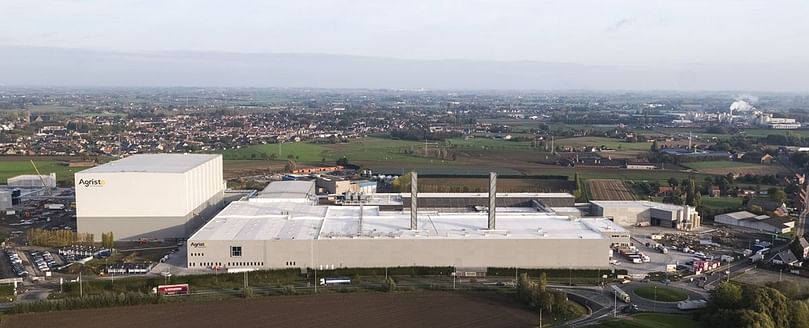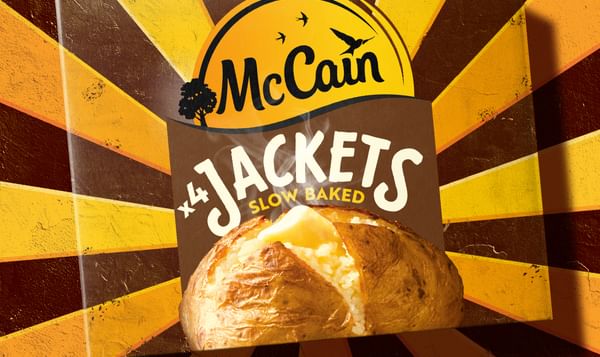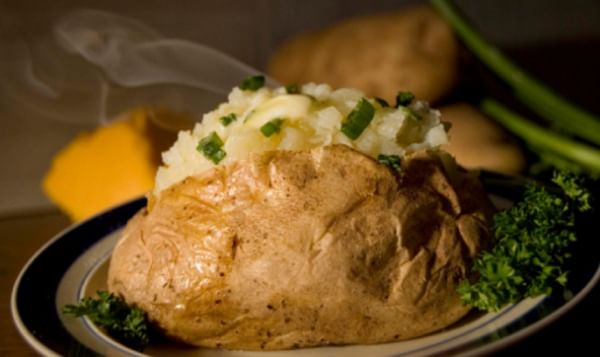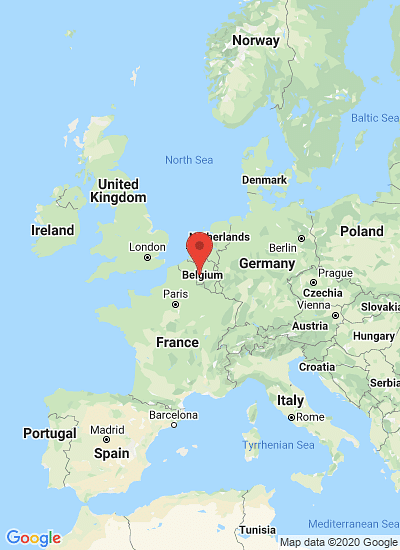Frozen french fries, ready for packing.
Agristo starts construction of second french fry line in Wielsbeke within months

An investment of € 200 million (USD 250 million) in a brand new French Fry plant in Wielsbeke, Belgium. That's what Hannelore Raes and Filip Wallays expect it will take to push their family company Agristo into the top five french fry manufacturers worldwide.
“Our dads established the business, we make it big.”
How many people work here? Hannelore Raes thinks for a moment and then says:
"One"
A single employee produces 25 tonnes - one and a half truck - frozen french fries every hour.
We are standing with Hannelore Raes, since January 2018 CEO of Agristo and co-CEO Filip Wallays (also since January 2018) in what looks like an traffic control tower of an airport. A dozen displays shows the status of each part of the processing line.
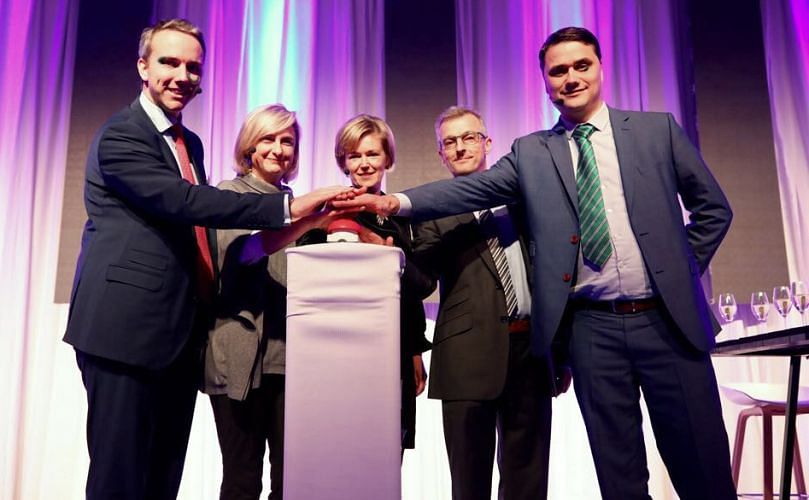
Hannelore Raes (at the back in the middle) and Filip Wallays (right in front) can here be seen at the inauguration of the Wielsbeke plant in December 2017
Ten meter below us we see a chain of shiny machinery. Fresh potatoes go in at one side, while the other side spits out bags of frozen french fries: peeled, washed, cut, parfried and frozen - everything is happening fully automated.
Filip Wallays, proudly:
“This is the most innovative french fry plant in the world.”
The entire production site is run with only 15 people per shift in a 5 shift rotation. And that includes the potato receiving, quality control of the potatoes as well as the packaging department.
Mid 2016, the factory location was still occupied by a number of warehouses of a shut-down plant of laminate manufacturer Unilin, still operating nearby on a larger site.
Filip Wallays, smiling:
“We were already looking for a while for a site to expand, but progress with permits at our headquarters in Harelbeke was slow.”
“With this site of 25 hectare space is no longer a limitation.”

Video impression of Agristo Wielsbeke and the building process (Courtesy: Alheembouw)
The entrepreneurs take us to a adjacent corridor. An opening in the concrete construction shows a huge second hall, the size of three soccer fields. It looks even larger because it is empty. In a few months that's where a second processing line will be located, the same size as the first one.
At that point, the french fry plant in Wielsbeke will produce 200.000 tonnes of frozen french fries - good for an additional 160 jobs.
That volume comes on top of the 500.000 tonnes that are produced by 600 employees working in the three other production sites of Agristo in Harelbeke (B), Nazareth (B) and Tilburg (NL).
And it is not just fries, but also mashed potato, croquettes and other frozen potato specialties.
The amount of money invested in three years time - € 200 million - captures the imagination. 150 million was used to buy the property and to build the high bay frozen storage, the building and the first production line. The remaining 50 million will be used to build the second line in Wielsbeke and for upgrades of the other production sites. Agristo is still looking to hire another 100 people.
With a turnover of € 350 million, Agristo is among of the top 10 french fry manufacturers in the world, but for a 100% family owned company without any external capital, 200 million is a heck of a lot of money.
Filip Wallays:
“The world of frozen potato products is a capital intensive business, with high volumes and low margins.”
“Our products are displayed as private label brands on the shelves of supermarket retail chains in 120 countries.”
“We sell a kilogram of frozen french fries at € 0.60. So we have to move large volumes. Our EBITDA is about 10-12%.”
Hannelore Raes:
“When we were brainstorming a few years ago with our family how Agristo should look in ten to twenty years, we concluded that a grow spurt was the only viable option.”
“We had to grow fast, or we would not grow at all. Our competitors are the other global players.”
“In the next five years we want to double our turnover to € 650 million.”
“Today we have a global market share of 4%. In 2023 that should be 7%. That's the only way to get to the global top 5.
The tour brings us to the high bay frozen storage, a 45 meter high white box, capable of storing 55.000 pallets of product. Nobody is working there, and that's a good thing: Icy cold air of minus 20 Degrees Celcius hits us in the face. Here, ten robot-elevators collect pallets 24 hours a day.
Filip Wallays:
“Only once a truck arrives, all ten start with the order - at the same time.”
“Within half an hour, a load of 20 tons of product is ready to leave.”
“Similar product is stored in different spots throughout the storage. For a human that sounds not very logical, but in this way the robots can together prepare an order within half an hour.
The business of Wallays and Raes goes already for a long time well beyond cutting fries and freezing them.
Filip Wallays:
“If that's all you do, you will make a loss.”
“In this volume business your margin is coming from the entire chain: starting at the sales up to the search for innovations that your customers appreciate.”
“If you work for the largest grocery chains in the world your supply chain has to be perfect. Details -such as how your pellets are stacked - become important.”
“As worldwide supplier we have excellent insight in which innovations work and which don't. We have access to the market research of all major supermarkets. What works for one customer, may work for another one at the other side of the world as well.”
“Also a precise prediction of the harvest and a good insight in of our cost of raw materials are part of our job.”
Frozen French Fries are a global business. Growing fast and gaining market share is necessary to compete with the major players such as the Canadian McCain Foods (30% global market share) and the American Lamb Weston. Other large players are the Dutch companies Aviko and Farm Frites and Clarebout in West-Flanders.
Filip Wallays:
“We are in the fortunate position that our global market is growing. Our product is neutral from a cultural point of view and less expensive than meat or vegetables.”
“World wide sales of potato products grows every year with 2 percent. Most of this growth is located in Asia and Africa.”
“On an annual basis Belgians eat 7 kilogram of potato products per capita and Americans 15 kilo. In Asia, that is only 1.5 kilo. Both China and India are growing rapidly on a percentage basis, but the starting volume is low. This offers a huge growth potential.”
“Potatoes have a higher nutritional value than rice, the cultivation requires less labour and takes less water.”
“The rise of western restaurant chains in Asia rapidly make people in India and China familiar with potato products.”
“McDonald's is a perfect missionary!”

